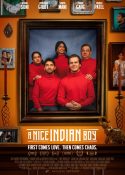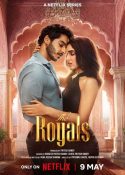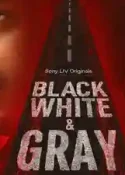 Bollywood.
Bollywood.
One word, which has the capability of conjuring up dozens of images of gorgeous ladies and handsome men, clad in colourful costumes, singing and dancing in the rain, running around trees, falling in love… and in the process, overcoming all obstacles in the way of their love, to finally be each other’s companion for life – True love!
Since time immemorial, movies have served as a dose of daily entertainment for the Indian audience. Movies have been a wonderland where people could be lost for 3+ hours, leaving their monotonous schedules and troubles behind… a luxury that they could otherwise not afford.
However, times have changed, and how! People are different, as is the face of the movies presented to the Indian audience. Gone are the days of those evil step mothers, the pretty damsels-in-distress, the one-man-army heroes, and of course, friends who did nothing more than serve as the side-kicks of the heroes and heroines.
Hindi film stereotypes gave way to contemporary characters, typical Bollywood masala gave way to author-backed scripts and performances. Heroes became as vulnerable as (gasp!) women, while heroines dared to dream. Where once upon a time, being a part of the film industry gave you automatic entry to the Social Outcasts Group, Bollywood became the ultimate destination for fame starved, starry eyed youngsters, who wanted nothing more than to eke out an easy way of living.
Bollywood.
As is obvious, Bollywood is an amalgamation of two words – Hollywood, and Bombay. Bombay went on to become Mumbai, but somehow, Bollywood remained Bollywood.
 The exact origins of the term ‘Bollywood’ are unknown, but it gained popularity somewhere in the 1970’s. Many prominent film celebrities (most notably, Amitabh Bachchan and Aamir Khan) have made clear their disdain of this term, but this didn’t stop ‘Bollywood’ from gaining national, and international, fancy.
The exact origins of the term ‘Bollywood’ are unknown, but it gained popularity somewhere in the 1970’s. Many prominent film celebrities (most notably, Amitabh Bachchan and Aamir Khan) have made clear their disdain of this term, but this didn’t stop ‘Bollywood’ from gaining national, and international, fancy.
Oh, and Bollywood’s the largest producer of films on earth – almost 1000 films (in all languages) per year.
Sounds all too good, doesn’t it? The future looks bright for Bollywood, what with its very well deserved international recognition. BUT, how many of us know about its past? About how it all began? About the who’s who of decades ago? Who the first superstars were and how they defined the Indian cinema as we see it today?
Do not look any further, for BollySpice is going to do that job for you!
For the next few weeks, we will be featuring 9 articles (each article dedicated to a decade), and will enlighten our readers about the wonderful history of BOLLYWOOD.
Hope you enjoy reading it as much as we did researching and writing about it!
 1930’s
1930’s
The movies of the thirties were all about addressing social issues prevailing in the country at that period of time. V.Santharam’s Duniya Na Maane, Aadmi and Padosi, Franz Osten’s Achut Kanya, Mehboob’s Watan, Ek Hi Raasta and Aurat were some of the numerous serious films with gripping social themes which were meant for all classes of the cinema audience.
The greatest event of the thirties was the introduction of sound. With the advent of this new technology, Ardeshir’s Alam Ara became the first Indian “talkie” movie to be released in cinemas. It opened on March 14, 1931 at Mumbai’s Majestic Cinema to packed houses. According to old records, people became desperate to watch the first day first show, and police aid had to be summoned to control the crowds. Four anna tickets were sold at Rs. 4 and Rs. 5. Since there was such a demand, black marketing of cinema tickets began with the first public show of Alam Ara, and the practice is still in use today.
Prabhat’s Sairandhri, which was processed and printed in Germany in 1933, became India’s first colour film. However, the first indigenously made colour film was Ardashir Irani’s Kisan Kanya made in 1937 and directed by Gidwani. From then on began the film industry’s romance with colour films.
Probably the most important (and definitely the most iconic) film of this period, Devdas, was released in 1935. The film, directed by Pramathesh Barua, depicted a tale of love frustrated by social distinction, and made eternal the love triangle of Devdas, Chandramukhi and Paro. The movie broke stereotypes, for characters of the movies were not completely evil, nor were they completely saintly. They were ordinary people conditioned by a rigid and crumbling system that was prevalent in the society at that time. KL Saigal immortalized the role of Devdas in the Hindi Cinema, though, sadly, not many would come to remember the names of the female leads of the movie.
 Sulochana (Ruby Myers), the biggest star of the silent era, found surviving the ‘talking, singing’ cinema was very tough. With three major films – Madhuri (1928), Anarkali (1928) and Indira B.A. (1929) – she was riding the crest of glory in the silent film era. Her popularity was such that when a short film on Mahatma Gandhi inaugurating a khadi exhibition was being shown, they added to it a hugely popular dance number of Sulochana’s from Madhuri, with sound effects!
Sulochana (Ruby Myers), the biggest star of the silent era, found surviving the ‘talking, singing’ cinema was very tough. With three major films – Madhuri (1928), Anarkali (1928) and Indira B.A. (1929) – she was riding the crest of glory in the silent film era. Her popularity was such that when a short film on Mahatma Gandhi inaugurating a khadi exhibition was being shown, they added to it a hugely popular dance number of Sulochana’s from Madhuri, with sound effects!
However, with the advent of sound, Sulochana suddenly found her career on the skids. Not one to give up easily, she took a year off to learn the language and made a dramatic comeback with the ‘talkie’ remakes of her ‘silent’ hits like Anarkali (1935), Bombay Ki Billi (1936) and Indira B.A (now called Indira M.A.-1929).
They were so successful that Sulochana was back in the reckoning with a bang. She was drawing a huge (for those days) salary of Rs 5000 a month, driving a sleek car (Chevrolet 1935) and going around with one of the biggest heroes of the silent era, D. Billimoria!
India’s first dream girl, Devika Rani, began her career in the 1930’s and became the top heroine of her days. She made her debut in 1933 in Karma opposite her husband Himanshu Rai and soon became the leading star of the time with films like Jawani Ki Hawa, Mamta, Jeevan Nayya and Achhut Kanya. Devika Rani, who came to be identified as the ‘First Lady of Indian Cinema’ became a major force in the ’30s and the early ’40s.
Acchut Kanya (1936) was her most notable film, wherein the story revolved around an untouchable girl (played by herself) and a Brahmin boy (played by Ashok Kumar), and how they fall in love and face the society which tried to tear their love apart. This movie was released at a time when law and precedent obstructed the inter-caste marriage and firmly supported the ostracism of the untouchable.
 Simultaneously, 1935 saw the rise of Australian actress Mary Ann Evans, who became popular later on with the title of Fearless Nadia. Evans exploded on the screen with Wadia Movietone’s stunt films in the mid-’30s. Her debut in 1933, Lal-e-Yaman, became a huge hit at the box-office. This was followed by Hunterwali in 1935, which went on become a bigger success, to an extent wherein she was bestowed with the nickname “Hunterwali”. Nadia brought to the Hindi screen the hunter-wielding ‘masked woman’ who became a cult figure, triggering a series of spin-offs in the market, like Hunterwali whips, sticks, belts, shoes and playing cards. Among her most popular films were Hunterwali (1935), Miss Frontier Mail (1936), Hurricane Hansa (1937), Punjab Mail (1939) and Diamond Queen (1940).
Simultaneously, 1935 saw the rise of Australian actress Mary Ann Evans, who became popular later on with the title of Fearless Nadia. Evans exploded on the screen with Wadia Movietone’s stunt films in the mid-’30s. Her debut in 1933, Lal-e-Yaman, became a huge hit at the box-office. This was followed by Hunterwali in 1935, which went on become a bigger success, to an extent wherein she was bestowed with the nickname “Hunterwali”. Nadia brought to the Hindi screen the hunter-wielding ‘masked woman’ who became a cult figure, triggering a series of spin-offs in the market, like Hunterwali whips, sticks, belts, shoes and playing cards. Among her most popular films were Hunterwali (1935), Miss Frontier Mail (1936), Hurricane Hansa (1937), Punjab Mail (1939) and Diamond Queen (1940).
Owing to such films, she became known as India’s Original Stunt Queen. Her film career spanned from 1933 to 1970, wherein she did multiple stunt films with the Wadias. It’s interesting to note that J.B.H. Wadia was truly one of the film industry’s most daring pioneers – he not only introduced a foreign woman to the Indian Cinema, but did so in such a way that charmed and captivated the Indian audience – no easy feat at that point of time.
The other major female stars of the decade were Durga Khote, Nadia, Jamuna, Padma Devi and Kanan Devi. The reigning male stars of the era were Prithviraj Kapoor, K.L. Saigal, Ashok Kumar, P.C. Barua and Pahadi Sanyal.
 Trivia:
Trivia:
Alam Ara (The Light of the World; 1931), directed by Ardeshir Irani, was the first Indian sound film. Both the movie and its music were widely successful, including the hit song, ‘De de khuda ke naam per’, which was also the first song of Indian cinema. Apparently, the song became a rage among beggars, who sang it on their rounds.
Zubeida Begum Dhanrajgir (1911-1988) became the First Talkie Actress of India, as she acted in the first Indian talkie – Alam Ara (1931).
Kisan Kanya was a 1937 Hindi feature film was India’s first indigenously made colour film.
Devika Rani was honoured with the first ever Dada Saheb Phalke Award for her “outstanding contribution to Indian cinema”.
Devika Rani is also accredited for having acted in the longest kissing scene in the movie world with her husband Himanshu Rai in Karma (1933). It was 4 minutes long and very controversial in the then culturally orthodox India.
After the fire at National Archives of India, Pune, in 2003, which destroyed last surviving prints of several classics such as Raja Harishchandra and Achyut Kanya, Alam Ara is no longer available in original format.









